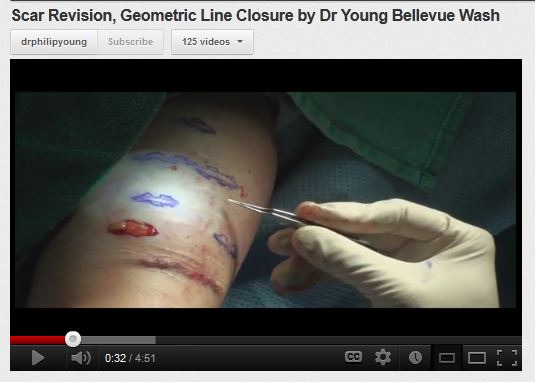This is a blog to discuss how to clean your incisions after any surgical procedure. The key for healing is to remove all crusting and to start with an incision that has the skin edges as close as possible together. The crusting is important to remove because the crusts can be nourishment for bacteria that can proliferate and cause more scarring. I usually suggest to my patients that they use vinegar and distilled water in a 1:3 dilution to clean the incisions. I tell people to do this twice a day. The goal is to get there incision to look like a fine wrinkle. If they keep doing this during the first 2 weeks the incision has the potential to heal incredibly. Always have vaseline over the incisions. It has been scientifically shown that skin cells grow faster when they have two surfaces to grow on. The vaseline serves as the other surface and this promotes the healing. You want the skin cells to grow over the incision as fast as possible. This reduces the scarring. Some people advocate hydrogen peroxide. I would caution that the use of this can be risky. I use the same dilution with hydrogen peroxide and distilled water in a 1:3 dilution. The key with the use of hydrogen peroxide if you are going to take the risk is to use it sparingly. You just want to use it to take the crusting off and then stop. If you do this more than that you can have more scarring. So being conservative is very important. If in doubt don’t use the hydrogen peroxide. And if you do use it, do so for only the first week and that is it. You should continue to clean your incision for about the first two weeks and keep vaseline on the incision at all times. After this you can do regular skin care and use sunscreen during the day (approximately 12 hours) and then silicone gel during the evening for 12 hours. The silicone gel can be found at any pharmacy or drugstore, like Bartells. I would do the silicone gel for the next 3 months. It is one of the only things that have statistically shown to make a difference in preventing scarring. Vitamin E, aloe vera, mederma based on my knowledge and recent literature search (05 / 2010) does not make a scientific difference. Following up with your doctor is really important to do so that they can make sure that you are on the way to healing the right way!
Thanks for reading, Dr Young
Dr Young specializes in Facial Plastic and Reconstructive Surgery and is located in Bellevue near Seattle, Washington
